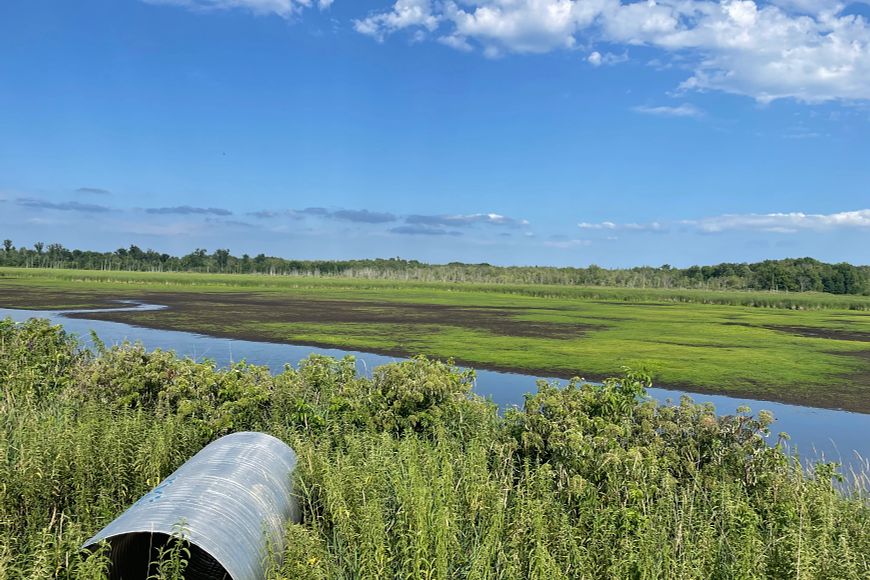Contact: Jaqi Christopher, DNR Wildlife Biologist
Jacquelyn.Christopher@wisconsin.gov or 715-853-2952
DNR Announces Drawdown For Navarino Wildlife Area
 The DNR is preparing to conduct a drawdown at two flowages in the Navarino Wildlife Area this spring.
Photo credit: Wisconsin DNR
The DNR is preparing to conduct a drawdown at two flowages in the Navarino Wildlife Area this spring.
Photo credit: Wisconsin DNR
MADISON, Wis. – The Wisconsin Department of Natural Resources (DNR) today announced it will be conducting a full drawdown on two flowages at Navarino Wildlife Area: Hanson Flowage and 80 Acre Flowage. The drawdowns will begin this spring, and water levels will be lowered slowly until full drawdown is achieved in mid-May.
The drop in water levels is necessary to prepare the sites for upcoming construction and repairs scheduled for the summer of 2024. The project will involve rebuilding the top, side slopes and spillways of the dikes at both locations.
The drawdown is necessary to complete construction, but it will also mimic a natural part of the wetland cycle. Exposing underwater areas to sunlight allows many seed-producing plants to grow, providing an abundant food source for waterfowl, shorebirds and other wildlife.
“With the lack of rain in the watershed associated with Navarino, we saw very low water levels during the summer of 2023. This ‘natural drawdown’ allowed us to see how the vegetation and wildlife responded,” says Jaqi Christopher, DNR Wildlife Biologist. “Shorebirds, cranes and other wildlife utilized the exposed mud flats and lush vegetation throughout the summer. The rains in early fall then flooded the vegetation, creating prime feeding grounds for migrating birds, muskrats and other wildlife.”
A similar response is expected with this year’s drawdown, which will also allow the DNR to complete some much-needed repairs.
Once construction is complete, water levels will be slowly raised through late summer and fall. This will create an optimal mix of open water, cover and available food for waterfowl and other wildlife during fall migration.

